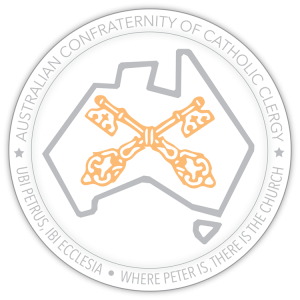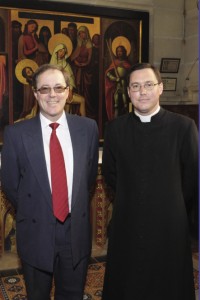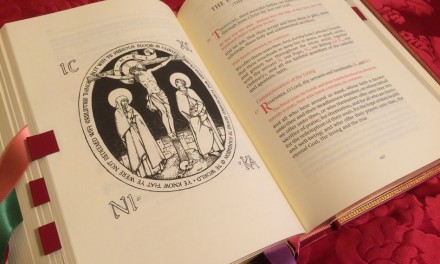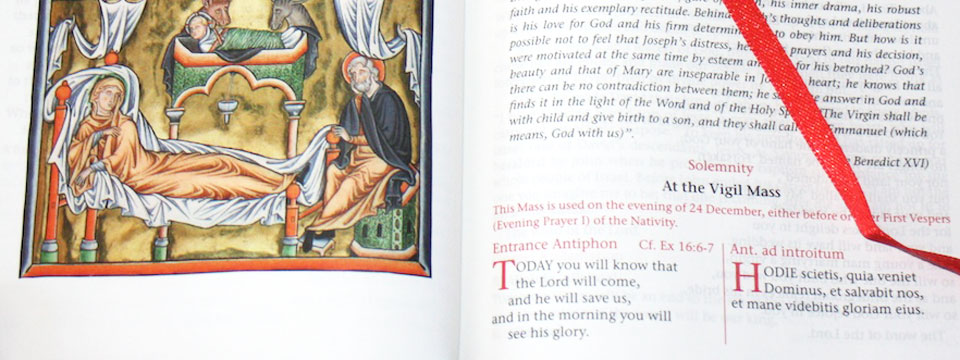On July 16th 1848 Pugin with all his family and colleagues gathered for a Mass in this church, but it was no ordinary mass, it was the first High Mass in Ramsgate, indeed East Kent, since the Reformation. Pugin loved it. It’s therefore fitting that on his bicentenary day, his 200th birthday, we should celebrate in the ancient form which he loved, the Mass that he knew.
The Catholic journal The Tablet after that first High Mass reported the names of the three ministers of the altar and the preacher of the day and commented:
It is truly consoling to see the revival of these solemnities in a part of England originally most Catholic, but till lately almost abandoned…in a few years we may reasonably hope that Catholic devotion will again flourish where the faith was first implanted by blessed Augustine and his holy companions.
This revivalist romantic sentiment was exactly the sort of thing that stirred the heart and soul of Pugin. He was fired by the faith of the medieval Christian world, a world filled with saints like the ones you see around this church. Pugin’s favourite was Augustine of course (there are more than half a dozen images of him here). Augustine, Pugin’s patron, the missionary sent by Pope Gregory to revive the Christian faith of the island after the Anglo Saxon invasions. The faith had first been cultivated by early Romano-British saints like David (who’s feast it is today) but had waned due to the invading influence of men like Hengist and Horsa (who also landed nearby).
Augustine’s own arrival, which certainly would have been viewable from this cliff side position, was for Pugin the key moment in the birth of English Christianity. Augustine’s momentous encounter with King Ethelbert at Ebbsfleet initiated a new era not only of faith, but of art (think of that icon of Christ and silver crucifix carried by those first monks), a new era of architecture (think of the building that soon followed Augustine’s arrival in Canterbury), a new era of literature (recall that illuminated gospel book that Augustine brought with him and the first ever Anglo-Saxon writing which came from the hand of Ethelbert – new Christina laws for a new nation). Yes, Christian English national identity began here.
Pugin knew this and he liked it. He knew the power of the culture of the middle ages, a culture of faith. He was not simply interested in the ‘gothic’ as an historian or archeologist. He saw that world of faith, of saints, of belief in the spiritual nature of humanity and of physical nature itself being charged with the glory of God, as so relevant and needed even for the industrial age in which he lived. His passion for building, for family, for the charity that he gave to the poor, for the education he tried to offer the poor street urchins of Ramsgate, to the risking of his life to save sailors on the Goodwin sands, this all, for Pugin, flowed from the medieval understanding of life – they flowed from his faith. And you know, although we see him as a little exaggerated and perhaps even overly romanticised, he was on to something!
Of course we’ve come here for a variety of reasons: to celebrate the great architect; to honour the man who fascinates us; to pray for his soul; to be thankful for a life lived under his influence – in monasticism or education; to keep his vision alive; to mark the occasion of an important national and local figure; to support the on-going development of this landmark. Many reasons, but why do any of us do any of this?
I would like to say that common to each of us is the search for the beautiful. Beauty is an inspiration for each of us and a gift for all. That’s why everyone is welcome in this church. As believers we have the conviction that beauty comes from God. But whether or not we are Catholic or a practicing Christian we can all, I think, appreciate the living context of Pugin’s ecclesiastical passion. Everything you see in this building is a result of the ideal of Pugin’s faith and his own love of beauty and pursuit of beauty. Commenting on that first High Mass in 1848 Pugin wrote in his diary that it was ‘magnificent’, his vision of beauty in action was suddenly ‘live’. The most beautiful thing this side of heaven.
You see, he did not create dead art or fossilised things to be admired merely as works of interest. This is really important. Everything had a living context. He was there to decorate function, in other words to make the working reality beautiful. The function was the living breathing Christian faith of a medieval variety, the decoration of it is all around you. Not only the stones, but the wood, the glass, the iron, the clay, the silver, the gold, the brass, all decorating and making beautiful the functions of divine worship.
In fact worship was to give us a glimpse of heaven. Is it not for that reason that pointed architecture reaches heavenward? People have often asked me, ‘if Pugin believed in function then why are churches so tall and with huge spires or towers, it seems like waste.’ But what if, what if, the function was to foster transcendence? Then it is absolutely fitting. If churches are to raise our minds and hearts to higher things then the function is there, and he decorates it.
He once wrote about his roodscreens, but the same could be said of every item and detail he designed for his churches, ‘The mere inspection of them is nothing … It is when they become associated with the life of divine worship that they produce the full power and lift the soul in ecstasy’.
One saint said that the whole purpose not only of liturgy, of divine ritual, but the whole reason of the Christian life, indeed the entire purpose of reality, of everything, is beauty. God is beauty and God is an artist, and God wants not only the creation to be beautiful but us as well. That’s a thought to ponder!
Beauty does bestow joy. It gives us joy today. It was St David’s dying motto wasn’t it that said – Be joyful keep the faith! I get the sense that Pugin would have liked this too. From his jokes, his playing with his children, his flamboyant Christmases, despite all the woes and setbacks there was a heart of joy in Pugin. Beyond all his anxieties and his trials both interior and exterior, he managed to keep a spirit of joy which comes only with wonder. He always was able to see the beauty that gave life its meaning and purpose.
On 13th September 1852, the day before he died, next door in the Grange, Pugin was brought into this his own church, and he commented ‘how beautiful it is’, ‘how beautiful it is’. It was his child. This was the last time he went out. Think of it – His last vision of beauty, of sacred architecture, of the vision that had driven him and inspired him through his life, was this church. Beauty possessed his soul and poured out from it, let’s respond to his request and pray that he may now enjoy the everlasting beauty of the vision of God and perhaps also that a little of that inspiration rub off on us and our works.
En Avant!







